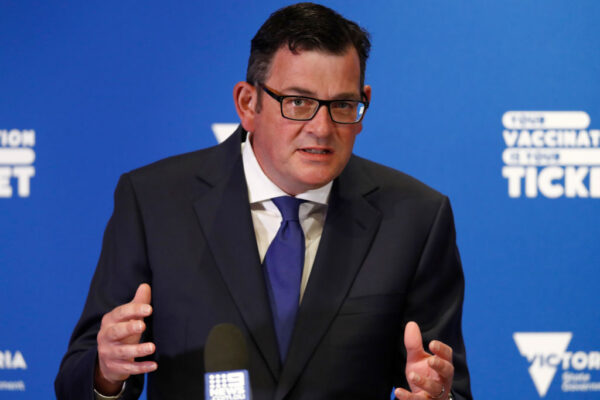Looking Beneath the Veneer of Victoria’s Economy
CommentaryMany are starting to realise that Victoria’s economy is a house of cards built on a foundation of printed money; the question is, for how much longer can this be denied? CommSec’s October quarter State of the States report finds that Victoria is the second worst performing state in the nation, “bested’ to the unwanted title by New South Wales. The latest result is in stark contrast to the Commonwealth Bank’s stockbroking arm’s July quarter edition, which argued that Victoria’s economy was not only healthy but supposedly the “best performing” in the country. It waxed lyrical on how Victoria “leads the nation” in economic performance, was the place to be, had a booming market, and enjoyed “low-interest rates … [which] continue to support retail spending.” How can a major state go from one that leads the nation to one that lags the nation in just one quarter? Victoria’s economic fundamentals have not changed. CommSec’s methodology is simply flawed. CommSec’s quarterly reports are based on indicators, such as construction activities, retail spending, and housing project commencements, that provide only a surface-level picture of how stimulated an economy is. Based on these measures, Victoria’s economy may, at times, look “hot’ and “exciting.” However, the glow can only ever be temporary. Taxpayers Holding up the House of Cards Scratch beneath the surface and you will find that Victoria’s economy is not nearly as healthy as it first appeared. The primary fuel being used to heat up the Victorian economy is taxpayers’ money. When the government spends so much, racks up so much debt, and experiences so many project cost blowouts, it makes sense that construction activities are plentiful, that public sector workers and government contractors have more spending power, and that unemployment is low—for now. A research report published in October by the Institute of Public Affairs, Victoria on the Edge, highlights that the state’s net government debt currently sits at over $101 billion (US$65 billion), approximately the equivalent to the debts of all the other states put together. Debt per Victorian is now approximately $15,000 (US$9,600) and is expected to double by 2035 to $30,000. While pandemic measures accelerated the deterioration of the state’s economy, even before its onset, key indicators of economic responsibility were already heading in the wrong direction. Debt, spending, and the expansion in the number of public sector workers had started escalating even before the pandemic. Victorian Premier Daniel Andrews speaks to the media at a COVID-19 update press conference in Melbourne, Australia, on Oct. 26, 2021. (Darrian Traynor/Getty Images) When the current government came to office in 2014, Victoria had a bigger surplus than any other Australian state as a percentage of Gross State Product (GSP). Since then, it has continued to deteriorate. Today, that surplus has turned into the largest deficit out of all the states in the country. State’s Debt Urgently Needs to Be Addressed At the peak of the economic fallout from the Cain-Kirner government-led recession of the early 1990s, net government debt amounted to 16 percent of Victoria’s GSP. Today, net government debt is already four percentage points higher. And it will continue to soar thanks to the government’s inability to rein in the State Budget deficit. By 2030, under the scenario where the interest rate increases to five percent, consistent with market expectations, the annual interest repayments of Victorian state government debt will increase to over $18 billion per annum—quintupling the current annual repayments and equivalent to the cost of building 18 new hospitals every year. In the 1990s, the Kennett Government was able to sell public assets to pay down the debt accumulated by its predecessors and address the deficit plaguing the state budget. Selling assets is no longer available as an option because major public assets have already been sold and their proceeds spent. Worst still, the current Victorian Government has vowed to use a billion of taxpayers’ dollars to re-nationalise the state’s power system! One inescapable truth for both sides of Victorian politics is that drastic action is needed to remedy the state’s dire financial situation. Victorians cannot afford a government distracted by glossy reports from a big bank that barely scratch the surface of the key issues they must overcome. Reports such as CommSec’s State of the States cover little more than temporary mood swings in the market and are as unpredictable as Melbourne’s weather. They are not reflective of the true state of Victoria’s economic deck of cards which is all out of Aces. Views expressed in this article are the opinions of the author and do not necessarily reflect the views of The Epoch Times. Follow Kevin You is a research fellow with the Institute of Public Affairs. He has a background in the fields of pol

Commentary
Many are starting to realise that Victoria’s economy is a house of cards built on a foundation of printed money; the question is, for how much longer can this be denied?
CommSec’s October quarter State of the States report finds that Victoria is the second worst performing state in the nation, “bested’ to the unwanted title by New South Wales.
The latest result is in stark contrast to the Commonwealth Bank’s stockbroking arm’s July quarter edition, which argued that Victoria’s economy was not only healthy but supposedly the “best performing” in the country.
It waxed lyrical on how Victoria “leads the nation” in economic performance, was the place to be, had a booming market, and enjoyed “low-interest rates … [which] continue to support retail spending.”
How can a major state go from one that leads the nation to one that lags the nation in just one quarter?
Victoria’s economic fundamentals have not changed. CommSec’s methodology is simply flawed.
CommSec’s quarterly reports are based on indicators, such as construction activities, retail spending, and housing project commencements, that provide only a surface-level picture of how stimulated an economy is.
Based on these measures, Victoria’s economy may, at times, look “hot’ and “exciting.” However, the glow can only ever be temporary.
Taxpayers Holding up the House of Cards
Scratch beneath the surface and you will find that Victoria’s economy is not nearly as healthy as it first appeared.
The primary fuel being used to heat up the Victorian economy is taxpayers’ money.
When the government spends so much, racks up so much debt, and experiences so many project cost blowouts, it makes sense that construction activities are plentiful, that public sector workers and government contractors have more spending power, and that unemployment is low—for now.
A research report published in October by the Institute of Public Affairs, Victoria on the Edge, highlights that the state’s net government debt currently sits at over $101 billion (US$65 billion), approximately the equivalent to the debts of all the other states put together. Debt per Victorian is now approximately $15,000 (US$9,600) and is expected to double by 2035 to $30,000.
While pandemic measures accelerated the deterioration of the state’s economy, even before its onset, key indicators of economic responsibility were already heading in the wrong direction.
Debt, spending, and the expansion in the number of public sector workers had started escalating even before the pandemic.

When the current government came to office in 2014, Victoria had a bigger surplus than any other Australian state as a percentage of Gross State Product (GSP). Since then, it has continued to deteriorate.
Today, that surplus has turned into the largest deficit out of all the states in the country.
State’s Debt Urgently Needs to Be Addressed
At the peak of the economic fallout from the Cain-Kirner government-led recession of the early 1990s, net government debt amounted to 16 percent of Victoria’s GSP.
Today, net government debt is already four percentage points higher. And it will continue to soar thanks to the government’s inability to rein in the State Budget deficit.
By 2030, under the scenario where the interest rate increases to five percent, consistent with market expectations, the annual interest repayments of Victorian state government debt will increase to over $18 billion per annum—quintupling the current annual repayments and equivalent to the cost of building 18 new hospitals every year.
In the 1990s, the Kennett Government was able to sell public assets to pay down the debt accumulated by its predecessors and address the deficit plaguing the state budget.
Selling assets is no longer available as an option because major public assets have already been sold and their proceeds spent.
Worst still, the current Victorian Government has vowed to use a billion of taxpayers’ dollars to re-nationalise the state’s power system!
One inescapable truth for both sides of Victorian politics is that drastic action is needed to remedy the state’s dire financial situation. Victorians cannot afford a government distracted by glossy reports from a big bank that barely scratch the surface of the key issues they must overcome.
Reports such as CommSec’s State of the States cover little more than temporary mood swings in the market and are as unpredictable as Melbourne’s weather. They are not reflective of the true state of Victoria’s economic deck of cards which is all out of Aces.
Views expressed in this article are the opinions of the author and do not necessarily reflect the views of The Epoch Times.












